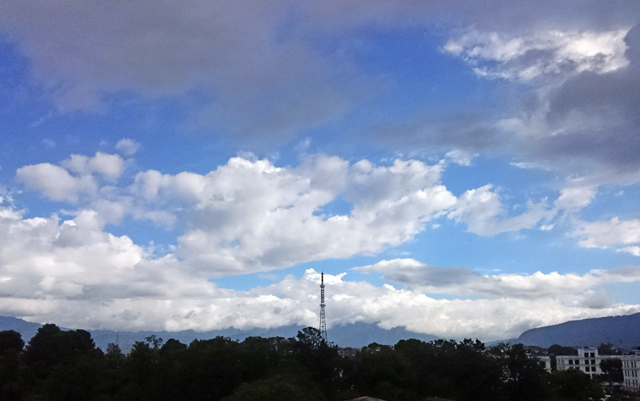Delayed monsoon gathers strength
Kathmandu, June 19
After standing still in the eastern region for a week, monsoon has gained strength in the eastern and central region today.
According to Meteorological Forecasting Division, 47.2 mm, 43.1 mm, 14.9 mm and 15.8 mm rainfall has been recorded in Dhankuta, Biratnagar, Dharan and Jiri respectively today.
“The stagnant monsoon slightly got additional moisture from the Bay of Bengal and has started to move towards the western parts from today,” meteorologist at MFD Suvash Rimal told THT, adding, “Precipitation is likely to occur through tonight to Wednesday in Kathmandu Valley and across the central region.”
Besides being inactive, there is a presence of westerly wind in the western and far-western regions of the country. MFD has predicted mostly cloudy weather throughout the country for tomorrow. Light to moderate rainfall is likely to occur at some places in the eastern region and in a few places in the central and western regions.
Within the last 24 hours, precipitation has been recorded at 34.2mm in Lumle, 38 mm in Bhairahawa, 20.7 mm in Pokhara, 17 mm in Dang, 12.8 mm in Dhangadi, 8 mm in Birendranagar, 7.4 mm in Jumla, 3.2 mm in Dipayal, 1.5 mm in Simara, 0.6 mm in Okhaldhunga and traces in both Taplejung and Dadeldhura. This year, the monsoon had entered Nepal on June 12, a delay of two days from the anticipated date of June 10. The Monsoon usually enters Nepal on June 10 and lasts till September 23. The monsoon entered Nepal on June 15 after a delay of five days, the previous year.
Earlier, a seasonal outlook issued by the South Asian Climate Outlook Forum had predicted above normal rainfall over large tracts of South Asia during this year’s summer monsoon. Citing the SASCOF report, the MFD said Nepal was most likely to receive normal rainfall during monsoon this year.
As per SASCOF report, some areas of the Tarai in the central and far-western regions will receive above-normal rainfall while hilly areas are likely to experience below-normal rainfall. Normal rainfall is most likely to sustain over the remaining parts of the country.
Nepal receives an average of 80 per cent annual rainfall during the monsoon, which originates in the Bay of Bengal and moves along the southern flanks of the Himalayas, bringing rain to Nepal.






